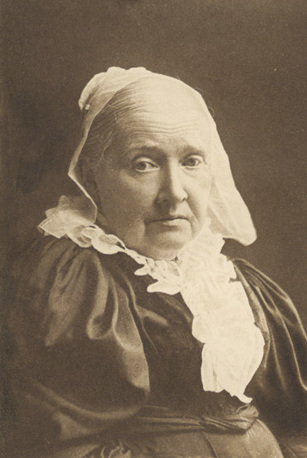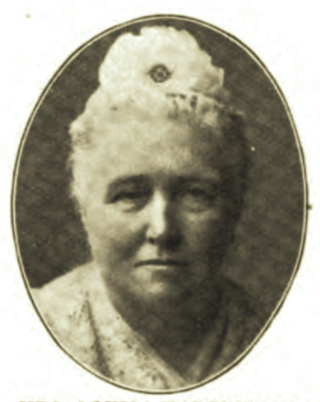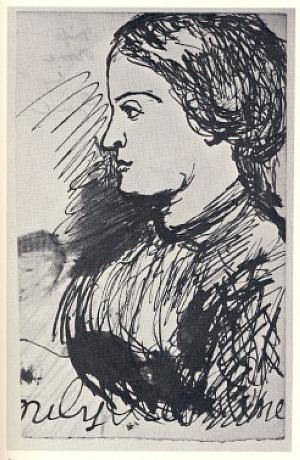Related Research Articles

Mary de Bohun was the first wife of Henry Bolingbroke, Earl of Northampton and Hereford and the mother of King Henry V. Mary was never queen, as she died before her husband came to the throne as Henry IV.

Julia Ward Howe was an American author and poet, known for writing the "Battle Hymn of the Republic" and the original 1870 pacifist Mother's Day Proclamation. She was also an advocate for abolitionism and a social activist, particularly for women's suffrage.
Constance of York, Countess of Gloucester was the only daughter of Edmund of Langley, 1st Duke of York, and his wife Isabella of Castile, daughter of King Peter of Castile and his favourite mistress, María de Padilla.

Mary Seton Fraser Tytler was a symbolist craftswoman, designer and social reformer.
Isabella of Castile, Duchess of York was the daughter of King Peter and his mistress María de Padilla. She accompanied her elder sister, Constance, to England after Constance's marriage to John of Gaunt, 1st Duke of Lancaster, and married Gaunt's younger brother, Edmund of Langley, 1st Duke of York.
Marion Kirkland Reid (1815-1902) was an influential Scottish feminist writer, notable for her A Plea for Woman which was first published in 1843 in Edinburgh by William Tait, then published in the United States in 1847, 1848, 1851, and 1852 as Woman, her Education and Influence under the name of Mrs. Hugo Reid. She was a member of the Ladies National Association for the Repeal of the Contagious Diseases Acts.
Henrietta Leyser is an English historian. She is an expert on the history of medieval England, in particular the role of women.

Louisa Martindale, née Spicer was a British activist for women's rights and suffragist.
Rose de Burford was a 14th-century merchant and business woman in the City of London, England.

Margaret Gillies was a London-born Scottish miniaturist and watercolourist.
Charlotte Manning was a British feminist, scholar and writer. She was the first head of Girton College.

Suzanne Rouviere Day was an Irish feminist, novelist and playwright. She founded the Munster Women's Franchise League, was one of Cork's first women poor-law guardians and served a support role in both World Wars.
Georgiana Hill, was a British social historian, journalist, and women's rights activist.
Matilda Penne, was an English businessperson of the fourteenth century, whose will survives.

Emily Rosaline Orme (1835–1915) was a leader of the Edinburgh National Society for Women's Suffrage. She was a noted campaigner for women's suffrage in Scotland.
Alice Holford was an English bailiff of London Bridge for 25 years. She was a rare example of a woman in authority in the fifteenth century.
Anne Esdall was an Irish printer, publisher, and bookseller.
Delia Dorothy Gaze FSA is an English art historian and freelance editor, based in Deptford, south-east London. She is best known for her work as editor of the Dictionary of Women Artists, first published in 1997, containing entries on 550 women painters, sculptors, photographers and workers in the applied arts. The book focuses on Western women artists from the medieval period onwards, and includes essays which place the artists in their historical context.

Marion Moss Hartog was an English Jewish poet, author, and educator. She was the editor of the first Jewish women's periodical, The Jewish Sabbath Journal.
References
- 1 2 "Kent, Marion (d. 1500) | Oxford Dictionary of National Biography" . Oxford Dictionary of National Biography (online ed.). Oxford University Press. 2004. doi:10.1093/ref:odnb/64496 . Retrieved 21 November 2018.(Subscription or UK public library membership required.)
- 1 2 3 Kermode, Jenny (2002). Medieval Merchants: York, Beverley and Hull in the Later Middle Ages. Cambridge University Press. p. 340. ISBN 9780521522748 . Retrieved 1 January 2019.
- ↑ Rees Jones, Sarah (2017). "Women and Citizenship in Later Medieval York". In Simonton, Deborah (ed.). The Routledge History Handbook of Gender and the Urban Experience. Routledge. ISBN 9781351995757. OCLC 971613678.
- ↑ Goldberg, Jeremy (1992). Women, Work, and Life Cycle in a Medieval Economy: Women in York and Yorkshire c. 1300–1520. Clarendon Press. ISBN 9780198201540. OCLC 45727438.